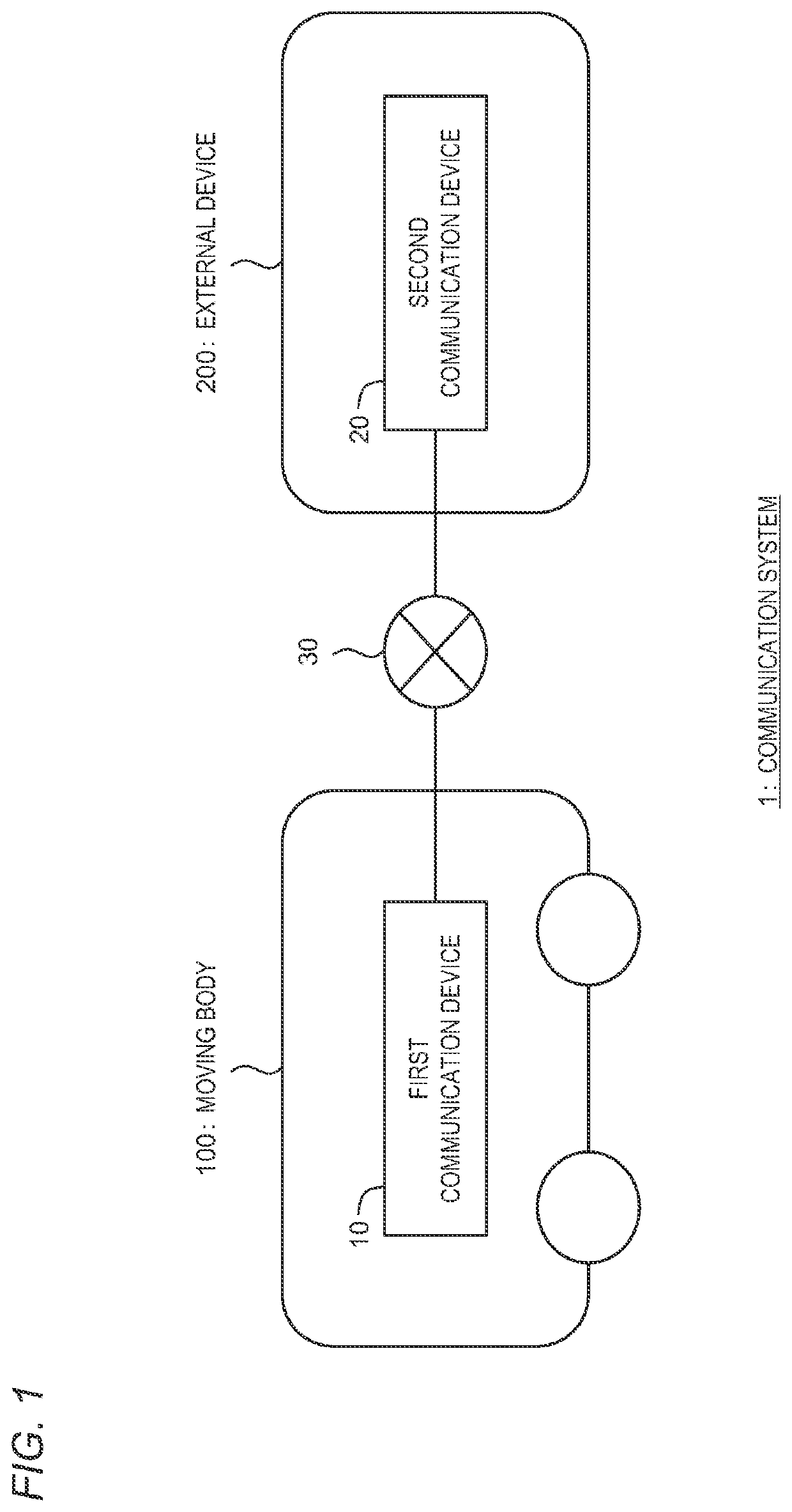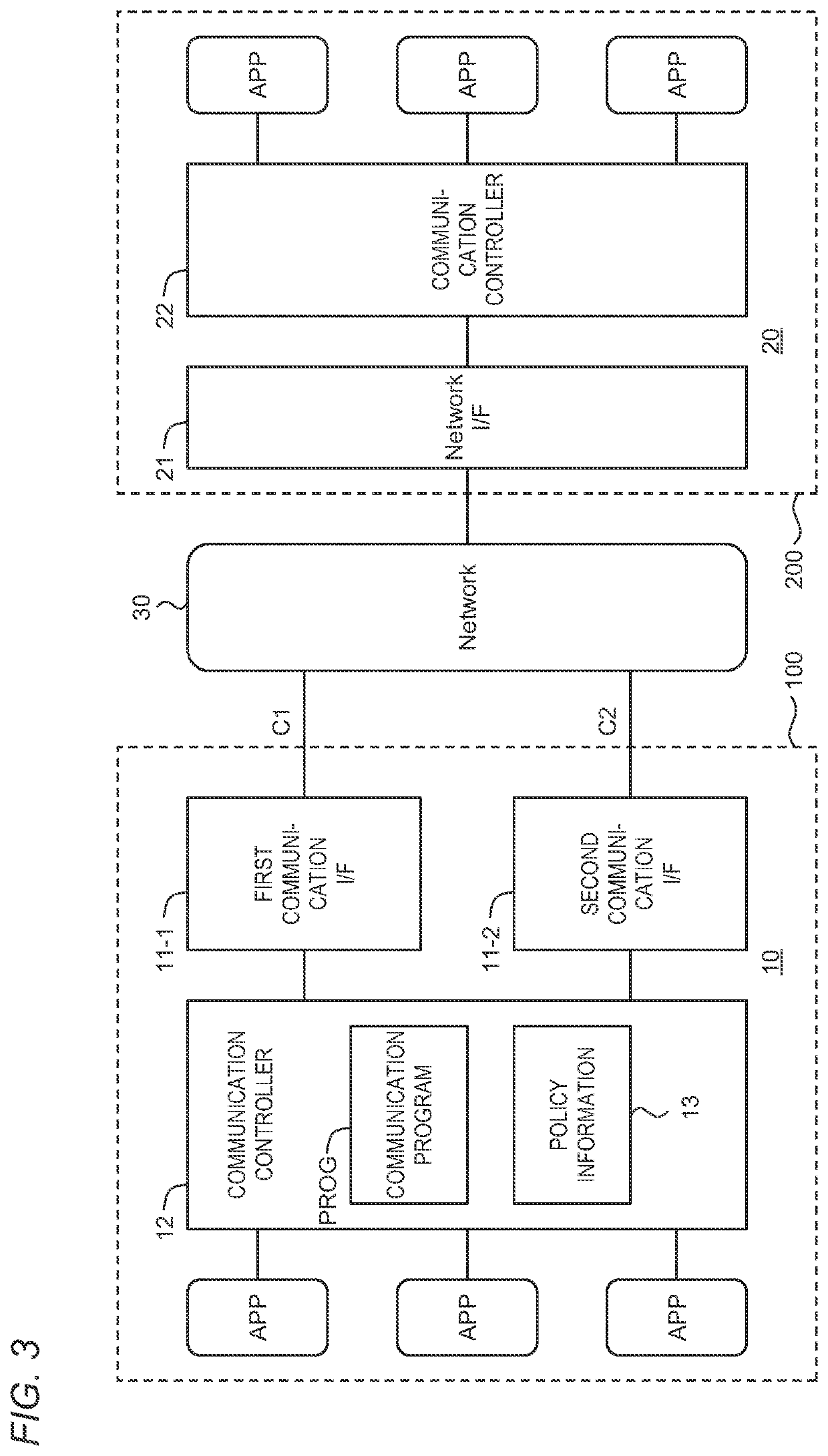Communication device, communication method, and non-transitory computer-readable recording medium
- Summary
- Abstract
- Description
- Claims
- Application Information
AI Technical Summary
Benefits of technology
Problems solved by technology
Method used
Image
Examples
first example
4-1. First Example
[0086]FIG. 6 is a timing chart for explaining a first example of the dynamic allocation control process. In the first example, the dynamic allocation control process intended to secure the data quality as much as possible will be described. That is, a communication requirement in the first example is “data quality-oriented.”
[0087]In a period before a time t1, the first communication rate R1 of the first communication line C1 is equal to or higher than a first threshold Th1. In this case, both the first streaming data S1 and the second streaming data S2 can be transmitted via the first communication line C1 without reducing the data quality. Therefore, the communication controller 12 allocates both the first streaming data S1 and the second streaming data S2 to the first communication line C1 having the higher line priority. The congestion control is not performed for the first streaming data S1 and the second streaming data S2. Therefore, an excellent data quality ...
second example
4-2. Second Example
[0099]FIG. 8 is a timing chart for explaining a second example of the dynamic allocation control process. In the second example, the dynamic allocation control process intended to reduce the communication cost as much as possible will be described. That is, the communication requirement in the second example is “communication cost-oriented.”
[0100]In a period before a time t1, the first communication rate R1 of the first communication line C1 is equal to or higher than a first threshold Th1. In this case, the communication controller 12 allocates both the first streaming data S1 and the second streaming data S2 to the first communication line C1, as in the case of the first example described above. It is thus possible not only to secure the excellent data quality but also to reduce the communication cost.
[0101]In a period from the time t1 to a time t2, the first communication rate R1 of the first communication line C1 is lower than the first threshold Th1 and is eq...
third example
4-3. Third Example
[0112]FIG. 10 is a timing chart for explaining a third example of the dynamic allocation control process. The third example is a modification of the second example. A description overlapping the case of the second example will be omitted as appropriate.
[0113]In the period from the time 13 to the time t4, the first communication rate R1 of the first communication line C1 is lower than the third threshold Th3 and is equal to or higher than the fourth threshold Th4. In this case, the communication controller 12 allocates the second streaming data S2 to the first communication line C1, and performs the congestion control for the second streaming data S2. On the other hand, the communication controller 12 allocates the first streaming data S1 to the second communication line C2. The congestion control is not performed for the first streaming data S1. As a result, the quality of the first streaming data S1 having the higher streaming priority is secured in preference to ...
PUM
 Login to View More
Login to View More Abstract
Description
Claims
Application Information
 Login to View More
Login to View More - R&D
- Intellectual Property
- Life Sciences
- Materials
- Tech Scout
- Unparalleled Data Quality
- Higher Quality Content
- 60% Fewer Hallucinations
Browse by: Latest US Patents, China's latest patents, Technical Efficacy Thesaurus, Application Domain, Technology Topic, Popular Technical Reports.
© 2025 PatSnap. All rights reserved.Legal|Privacy policy|Modern Slavery Act Transparency Statement|Sitemap|About US| Contact US: help@patsnap.com



